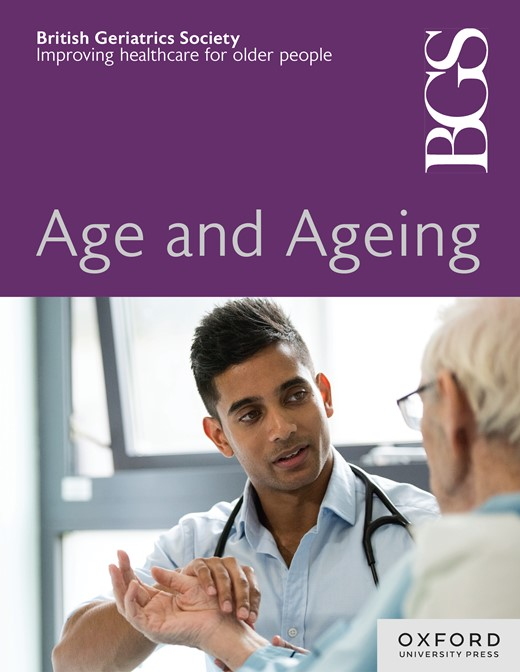动态血压生物标志物能预测老年人未来的跌倒吗?
IF 6
2区 医学
Q1 GERIATRICS & GERONTOLOGY
引用次数: 0
摘要
背景:虽然动态血压监测(ABPM)生物标志物可以预测心脑血管预后,但迄今为止很少有研究研究其与跌倒的关系。本研究的目的是检查ABPM生物标志物与近期跌倒的老年人进一步跌倒之间的关系。方法连续招募≥70岁的患者(118例)进行跌倒评估,包括24小时ABPM,并随访至下一次临床预约,记录跌倒事件(至少随访1个月)。ABPM生物标志物包括总收缩压(sBP)、最小收缩压值、收缩压值&;lt; 100mmhg、收缩压下降(正常下降&;gt;10%,非浸泡0-10%,反向浸泡&;lt;0%)和收缩压晨升(醒来后2小时平均收缩压减去夜间最低收缩压)的标准差。Logistic回归模型评估了ABPM生物标志物与进一步下降之间的关系。结果四分之一的参与者报告在平均7个月的随访中进一步下降。低血压发作与进一步跌倒独立相关,优势比4.52 (95% CI 1.56, 13.11);P = .006)。最小收缩压值也与进一步跌倒独立相关,收缩压每增加1 mmHg,跌倒减少3%(校正优势比0.97 (95% CI 0.94, 0.99);P = 0.027))。晨间骤升每增加1 mmHg,跌倒风险增加6%(校正优势比1.06 (95% CI 1.02, 1.10);P = .005)。在下降状态和进一步下降之间没有联系。ABPM生物标志物可能代表未来跌倒的重要可改变的危险因素,ABPM应纳入老年患者的全面跌倒评估。本文章由计算机程序翻译,如有差异,请以英文原文为准。
Can ambulatory blood pressure biomarkers predict future falls amongst older people?
Background While ambulatory blood pressure monitoring (ABPM) biomarkers can predict cardiovascular and cerebrovascular outcomes, little work to date has examined their link with falls. The objective of this study was to examine associations between ABPM biomarkers and further falls in a cohort of older people with recent falls. Methods A consecutive series (n = 118) of patients≥70 years undergoing falls assessment including 24-hour ABPM were recruited and followed to their next clinical appointment, where incident falls were recorded (minimum follow-up 1 month). ABPM biomarkers included standard deviation for overall systolic blood pressure (sBP), minimum sBP value, sBP values <100 mmHg, sBP dipping (normal dipping>10%, non-dipper 0–10%, reverse dipper <0%) and sBP morning surge (average 2-hour post-awakening sBP minus the lowest night-time sBP). Logistic regression models assessed the relationship between ABPM biomarkers and further falls. Results One quarter of participants reported a further fall at mean 7 months’ follow-up. Hypotensive episodes were independently associated with further falls, odds ratio 4.52 (95% CI 1.56, 13.11); P = .006). Minimum sBP values were also independently associated with further falls, with a 3% reduction in falls for every 1 mmHg increase in sBP (adjusted odds ratio 0.97 (95% CI 0.94, 0.99); P = .027)). For every increase in morning surge by 1 mmHg, there was a 6% increase in falls (adjusted odds ratio 1.06 (95% CI 1.02, 1.10); P = .005). There was no association between dipping status and further falls. Discussion ABPM biomarkers may represent important modifiable risk factors for future falls, and ABPM should be integrated into a comprehensive falls assessment in older patients.
求助全文
通过发布文献求助,成功后即可免费获取论文全文。
去求助
来源期刊

Age and ageing
医学-老年医学
CiteScore
9.20
自引率
6.00%
发文量
796
审稿时长
4-8 weeks
期刊介绍:
Age and Ageing is an international journal publishing refereed original articles and commissioned reviews on geriatric medicine and gerontology. Its range includes research on ageing and clinical, epidemiological, and psychological aspects of later life.
 求助内容:
求助内容: 应助结果提醒方式:
应助结果提醒方式:


